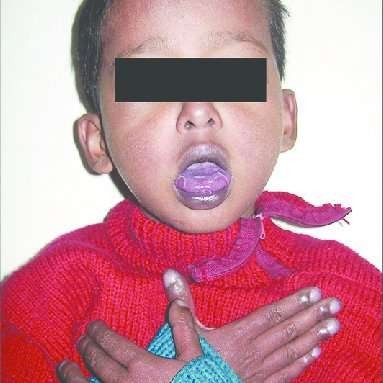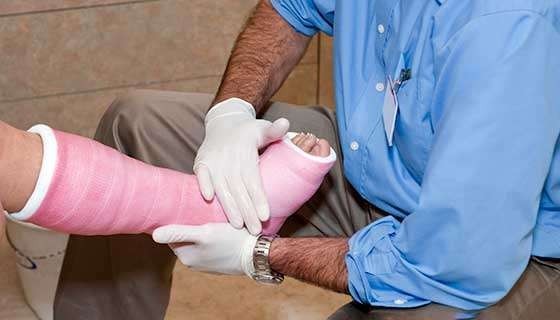A nurse is assessing a 6-month-old infant who has respiratory syncytial virus.
The nurse should immediately report which of the following findings to the provider?
Cough or difficulty in breathing.
Oxygen saturation < 90% or central cyanosis.
Severe respiratory distress (e.g grunting, very severe chest indrawing).
Signs of pneumonia with a general danger.
The Correct Answer is B

This is because oxygen saturation below 90% indicates that the infant is not getting enough oxygen and central cyanosis (bluish color of the skin due to lack of oxygen) is a sign of severe respiratory distress.
Both of these findings require immediate medical attention.
Choice A is wrong because cough or difficulty in breathing, while concerning, may not require immediate reporting to the provider as they are common symptoms of RSV infection.
Choice C is wrong because severe respiratory distress (e.g grunting, very severe chest indrawing), while concerning, may not require immediate reporting to the provider as they are common symptoms of RSV infection.
Choice D is wrong because signs of pneumonia with a general danger, while concerning, may not require immediate reporting to the provider as they are common symptoms of RSV infection.
Nursing Test Bank
Naxlex Comprehensive Predictor Exams
Related Questions
Correct Answer is D
Explanation
Checking the toddler’s ID band against the medical record is the best way to confirm their identity before administering medication.
This ensures that the right medication is given to the right patient.
Choice A is wrong because room numbers can change and are not a reliable way to identify a patient.
Choice B is not the best answer because it relies on another person’s knowledge and memory, which can be fallible.
Choice C is wrong because parents may be stressed or distracted and may not provide accurate information.
Correct Answer is A
Explanation
The first action the nurse should take is to elevate the child’s leg.

This is choice A. Elevating the child’s leg can help reduce swelling and improve circulation.
After elevating the child’s leg, the nurse can then administer pain medication (choice B), petal the edges of the cast (choice C), and teach the child about cast care (choice D).
Whether you are a student looking to ace your exams or a practicing nurse seeking to enhance your expertise , our nursing education contents will empower you with the confidence and competence to make a difference in the lives of patients and become a respected leader in the healthcare field.
Visit Naxlex, invest in your future and unlock endless possibilities with our unparalleled nursing education contents today
Report Wrong Answer on the Current Question
Do you disagree with the answer? If yes, what is your expected answer? Explain.
Kindly be descriptive with the issue you are facing.
